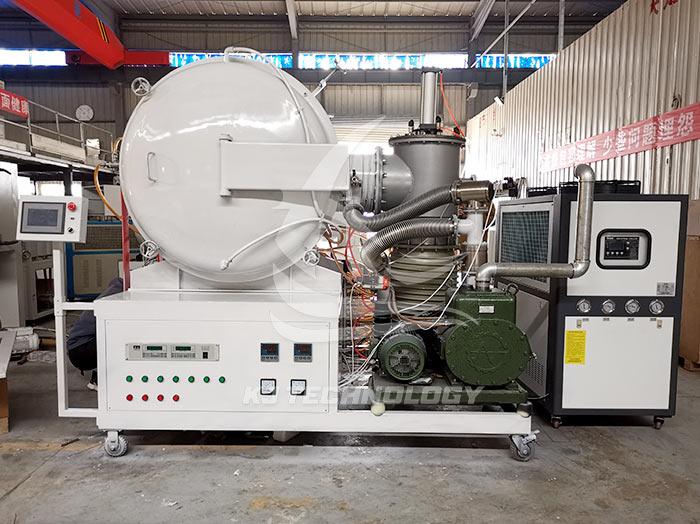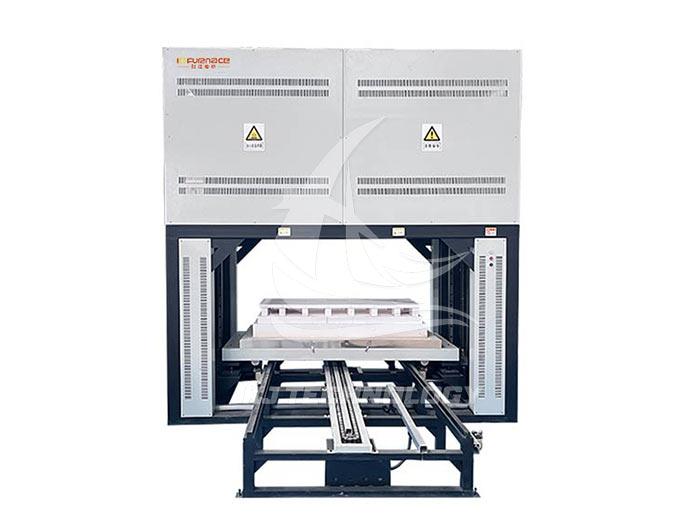Can metal heat treatment furnaces be annealed?
 08-12-2025 Author: KJ technology
08-12-2025 Author: KJ technology
Metal heat treatment furnaces can be fully used for annealing processes. Annealing is one of the most fundamental and widely used processes in metal heat treatment. Its core purpose is to eliminate internal stresses in metals, improve tissue uniformity, reduce hardness, and increase plasticity through heating, insulation, and cooling operations, creating conditions for subsequent processing or use. The following is a detailed explanation:
1. Selection of furnace type for annealing process
Metal heat treatment furnaces can be flexibly selected according to annealing types and part requirements. Common furnace types include:
Box type annealing furnace
Applicable scenarios: Batch processing of small and medium-sized parts (such as plates, shafts, gears, etc.).
characteristic:
Good temperature uniformity (within ± 5 ℃) ensures consistent overall performance of the parts.
Equipped with controllable atmosphere systems (such as nitrogen and hydrogen) to prevent oxidation and decarbonization.
Example: After complete annealing in a 700 ℃ box furnace, the elongation of automotive steel plates increases from 15% to 25%, making it easier to form by stamping.
Well type annealing furnace
Applicable scenarios: Vertical annealing of long axis and annular parts (such as drive shafts and bearing rings).
characteristic:
Vertical heating design reduces part bending deformation.
Supporting protective atmosphere or vacuum environment to avoid surface oxidation.
Example: After spheroidizing annealing in a 680 ℃ pit furnace, the hardness of a bearing ring with a diameter of 300mm decreased from 280 HB to 200 HB, and the machinability was significantly improved.
Continuous annealing furnace
Applicable scenarios: Large scale production lines (such as continuous annealing of strip, steel wire, and pipe).
characteristic:
The parts are continuously transported through the heating zone, insulation zone, and cooling zone via a conveyor belt, resulting in high production efficiency.
The cooling speed can be precisely controlled (such as wind cooling, water mist cooling combination).
Example: After annealing in a continuous furnace at 720 ℃, the yield strength of cold-rolled steel plate decreased from 450 MPa to 280 MPa, and the formability was optimized.
vacuum annealing furnace
Applicable scenarios: high-precision, high surface quality parts (such as aviation blades, precision molds).
characteristic:
Heat in a vacuum environment (to avoid oxidation and decarburization), then slowly cool down.
High surface smoothness and minimal deformation.
Example: After annealing in a 750 ℃ vacuum furnace, the surface roughness of aviation titanium alloy blades reaches Ra0.4 μ m or less, and there is no oxide scale.
2. Key parameter control of annealing process
Heating temperature
Principle: Select temperature range based on material type and annealing purpose:
Complete annealing: Heat to 30-50 ℃ above Ac ∝ (hypoeutectoid steel) or 30-50 ℃ above Accm (hypereutectoid steel) to fully austenitize the structure.
Spheroidization annealing: Heat to 20-30 ℃ above Ac ₁, keep warm, and slowly cool to spheroidize the carbides.
Stress relief annealing: Heat to 100-200 ℃ below Ac ₁ (usually 500-650 ℃) to eliminate internal stress.
Example:
45 # steel complete annealing temperature: 850-880 ℃ (Ac ∝≈ 820 ℃).
T10 steel ball annealing temperature: 760-780 ℃ (Ac ₁ ≈ 730 ℃).
Holding time
Principle: Calculate based on the effective thickness of the part (usually 15-30 minutes/25mm) to ensure uniform temperature and sufficient tissue transformation.
Example: For shaft components with a diameter of 80mm, the insulation time should be ≥ 45 minutes.
Cooling method
In furnace cooling: used for complete annealing and stress relief annealing, with a very slow cooling rate (about 5-10 ℃/h) to avoid tissue stress.
Isothermal cooling: used for spheroidization annealing, first rapidly cool to a temperature below Ar ₁ (such as 680 ℃) for insulation, and then cool in the furnace to below 500 ℃ before exiting the furnace.
Controlled cooling: used for certain special annealing processes (such as intermediate annealing), with a cooling rate between furnace cooling and air cooling.
3. Typical microstructure and properties after annealing
complete annealing
Organization: Obtaining ferrite and pearlite from hypoeutectoid steel; Obtaining pearlite and network carbides through eutectoid steel (subsequent spheroidization annealing is required to eliminate the network structure).
Performance: Reduced hardness (e.g. hardness ≤ 197 HB after annealing of 45 # steel), improved plasticity (elongation ≥ 25%), and ease of cold working.
spheroidizing annealing
Organization: Carbides are distributed in spherical form on the ferrite matrix.
Performance: Reduced hardness (e.g. T10 steel ball hardness ≤ 207 HB after annealing), improved machinability, and provided uniform structure for subsequent quenching.
Stress relief annealing
Organization: The organization does not undergo transformation, only internal stress is eliminated.
Performance: Residual stress is reduced by over 80%, dimensional stability is improved, and deformation and cracking during subsequent processing or use are avoided.
Recrystallization annealing
Applicable scenarios: Metal after cold processing (such as cold-rolled steel plates, cold drawn steel wires).
Organization: The fibrous tissue produced by cold deformation is replaced by equiaxed grains.
Performance: Plastic recovery (such as an increase in elongation from 5% to 25% after recrystallization annealing of cold-rolled steel plates), and a decrease in hardness.
4. Precautions for Annealing Process
Prevent oxidation and decarbonization:
Use a protective atmosphere (such as nitrogen, hydrogen) or a vacuum environment.
Control the oxygen content in the furnace to be ≤ 10 ppm (for precision parts).
Control deformation:
When placing parts, avoid local stress (such as hanging or stacking too tightly).
For thin-walled parts, they can be fixed with fixtures or cooled in the furnace to below 300 ℃ before being removed from the furnace.
Organizational uniformity:
Ensure sufficient heating temperature and holding time to avoid incomplete tissue transformation.
For large section parts, segmented heating or preheating treatment can be used.
Subsequent processing connection:
After spheroidization annealing, quenching should be carried out as soon as possible to avoid coarsening of carbides.
If cold processing is required after stress relief annealing, the processing amount should be controlled (usually ≤ 10%) to avoid the generation of internal stress again.








